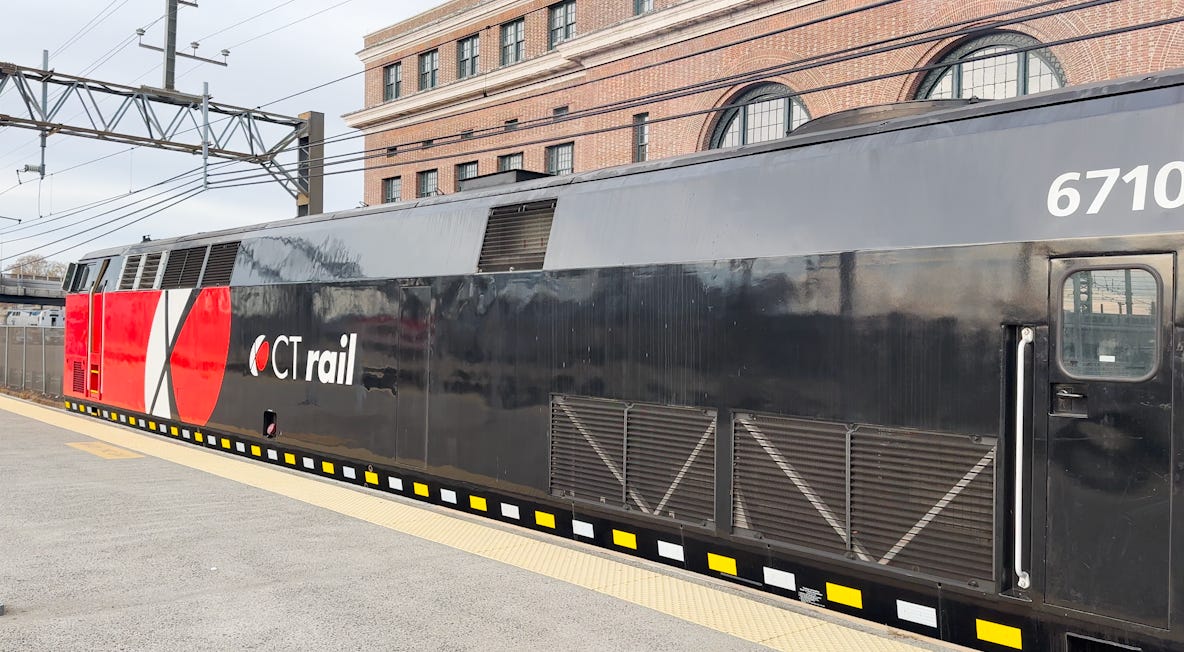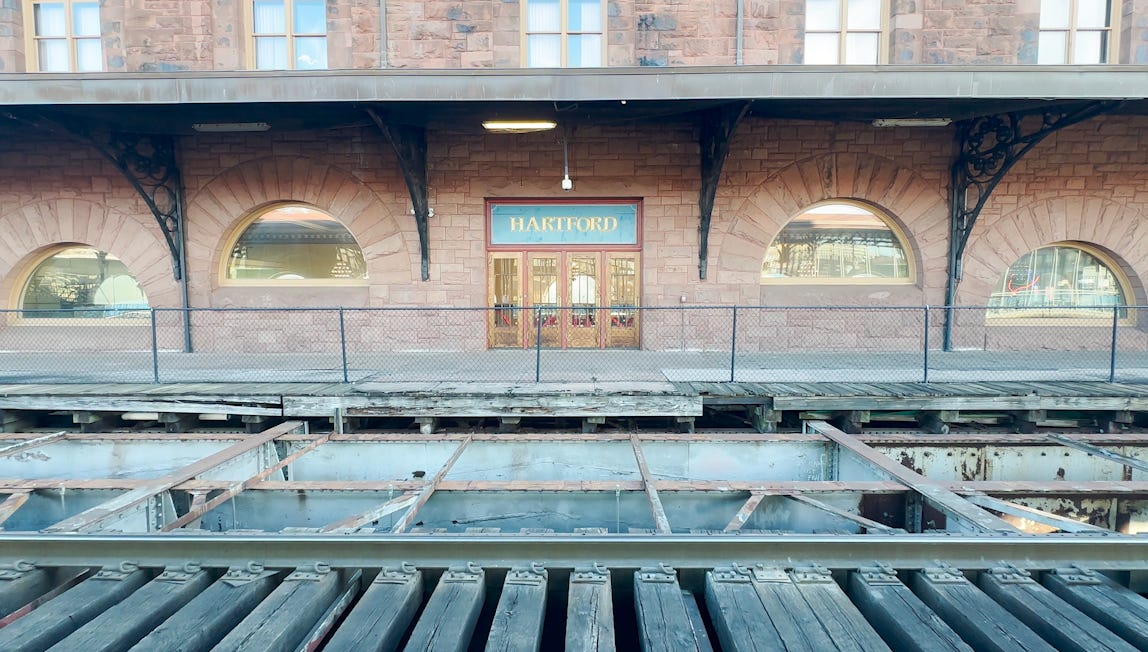CTrail's Hartford Line: Major Improvements Coming Soon
Connecticut's push for reliable public transportation continues
On November 15th, 2024, I rode CTrail’s Hartford Line from New Haven Union Station to Hartford Union Station.
The Hartford line passes through nine stations: New Haven Union, New Haven State Street, Wallingford, Meriden, Berlin, Hartford Union, Windsor, Windsor Locks, and Springfield Union. Construction on a station in Enfield begins in 2025.
The Hartford Line is operated by the Connecticut Department Of Transportation but runs alongside Amtrak’s service on the same route. Between CTrail, and Amtrak’s Valley Flyer, Springfield Shuttle, and Vermonter, there’s more opportunities for commuters to travel through Hartford throughout the day.
I took the 8:20 AM train from track three. The trip to Hartford takes 50 minutes, but the entire route to Springfield takes a little over 90. I purchased my ticket on the CTrail etix app for $8.25. I wrote about their app in my piece about the Shore Line East, but I will once again mention how clunky it is.
The rolling stock on my trip was a P40DC locomotive with Mafersa coaches. Built in the early 90s, the coaches cars provide comfortable enough seats, cup holders, and a few tables here and there. They aren’t in good shape or necessarily clean, but do the job for the short trip. In 2026 the Hartford Line will get new rail cars purchased from Alstom.
The route from New Haven to Hartford is an odd one; from urban to rural scenery, to a suburb to a metro area, the 50 minute ride is inconsistent in nature. There aren’t the stunning views seen on lines like the Shore Line East, but you’re able to learn a lot about the area. One of my favorite things about traveling by rail is the way you can get a brief spectatorial glimpse into the story of a region, both economically and culturally. Through much of the journey on the Hartford Line you’re able to see many local businesses like car washes, liquidation services, mechanics, glass replacement, car dealerships, pizzerias and more, interrupted by large warehouses from corporations like Amazon.
The arrival to Hartford Union Station is anticlimactic. As the train slowly comes around the turn you’re met with a single, somewhat ugly platform that seemingly comes out of nowhere. It’s very easy to get into a traffic jam when trying to descend into the Transportation Center; the boarding area’s layout and design is not conducive for easy passenger navigation. The impracticality of the platform is a shame considering the station and Transportation Center itself are in fact very charming.
Hartford Union Station is historic; in 1843 “Union Depot” was built. In 1914 the station burnt down and was rebuilt shortly thereafter, which is the large brownstone building that stands today. Listed on the National Registry of Historic Places, Union Station seems to put an effort into letting visitors in on their notable history. Throughout the terminal imagery of historic Hartford is displayed on walls and entryways. On my railway travels I’ve noticed that stations that take the most pride in displaying local history have the most character, with New Haven Union Station and New London Union Station being examples of this.
Just downstairs from the train platform is the bus station, which has 15 gates for boarding. Each station has its own screen showing which bus is departing from the gate. One of the highlights of Central Connecticut’s bus service is CT Fastrak, which travels back and forth from Hartford and New Britain. As you pull into Hartford by train, you’ll see bright green bus stops along the “CTfastrak Busway” that run parallel to the tracks. As you can tell from the name, the CTfastrak Busway is open only to the bus line in order to limit delays and congestion caused by traffic. Fastrak uses a diesel-electric hybrid bus that is both eco-friendly and efficient for passengers.
Momentum behind the Hartford Line is only growing; the State Of Connecticut is putting $102 million dollars towards the line, adding double tracking that will allow more trains to run to Hartford and Springfield. Another $2.56 million will go towards the relocation of Hartford Union Station.
Although the Hartford Line may not be the prettiest ride, and has its issues to address, its role as a mode of transportation is necessary for Central Connecticut. Connecticut’s plans to improve the line look promising for economic development of the region, and are an example of the state’s strong commitment to environmental protection through public transportation.
For more on my trip, watch my Youtube Video below.







